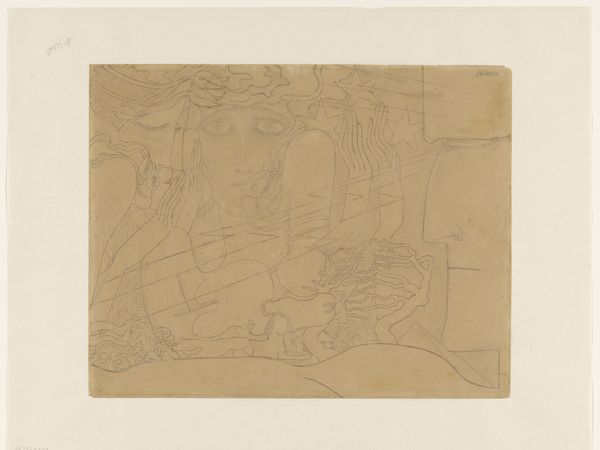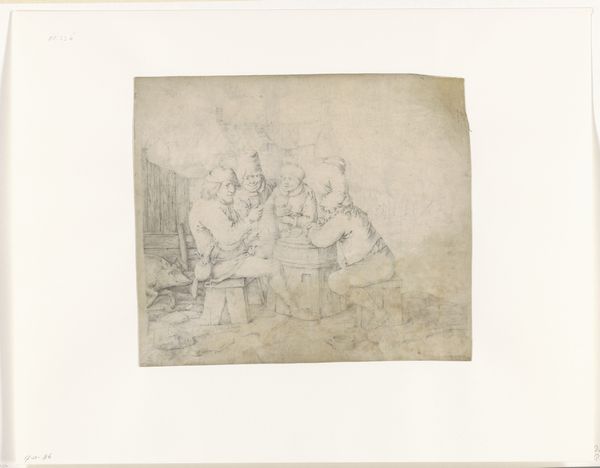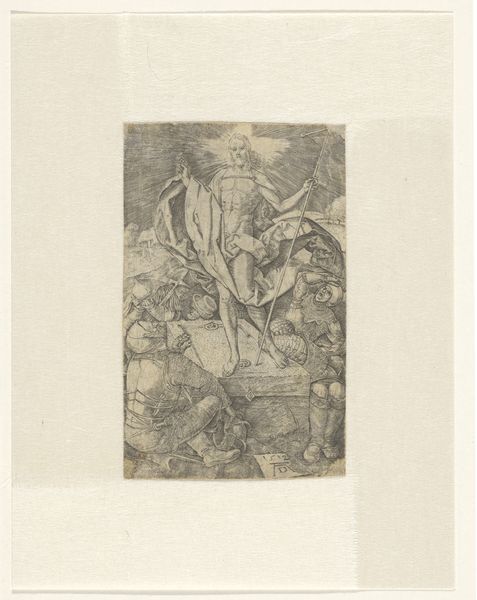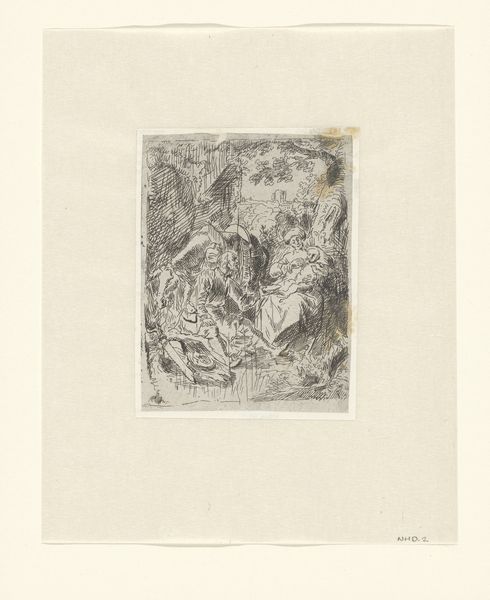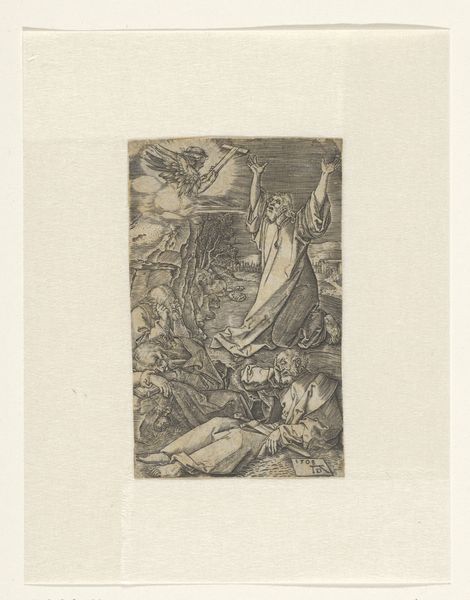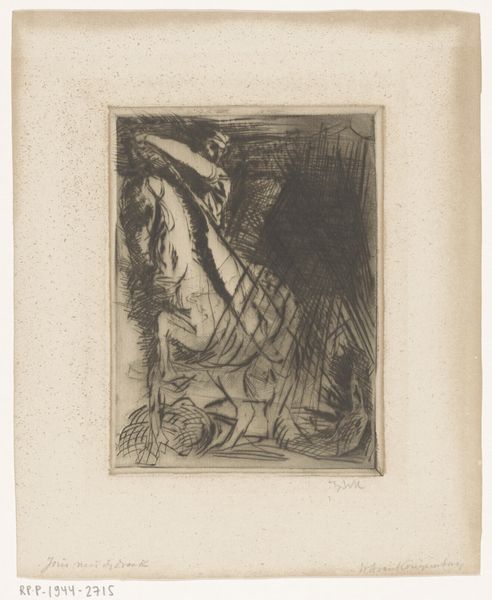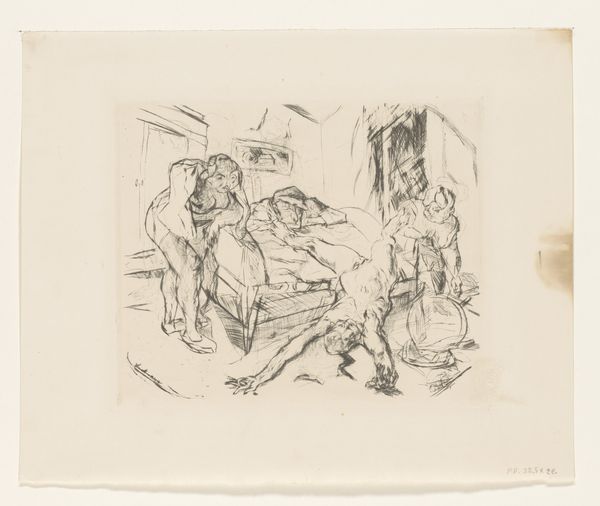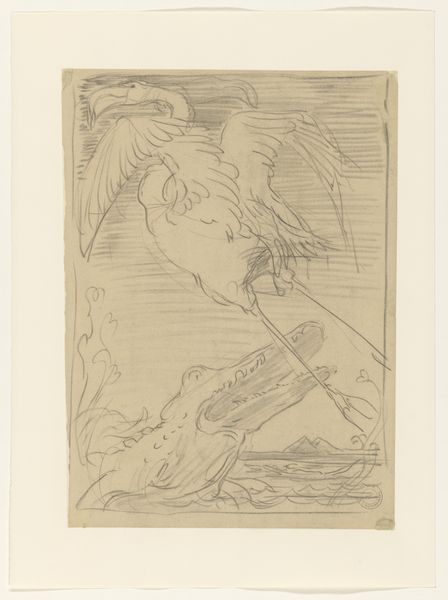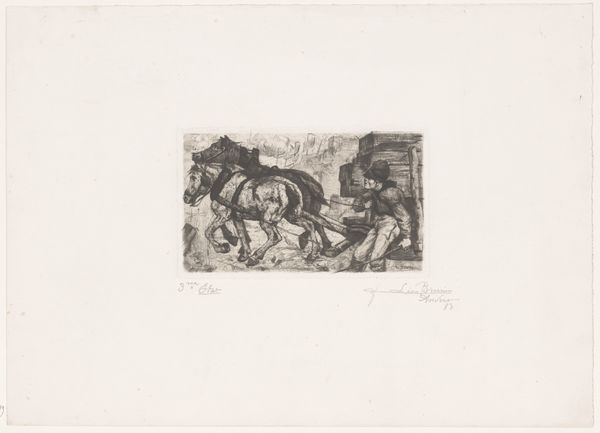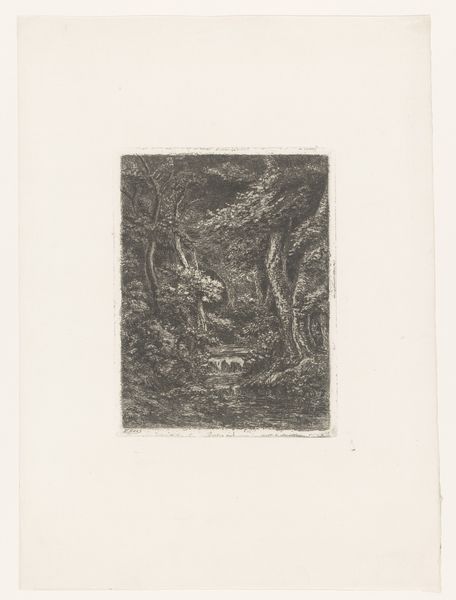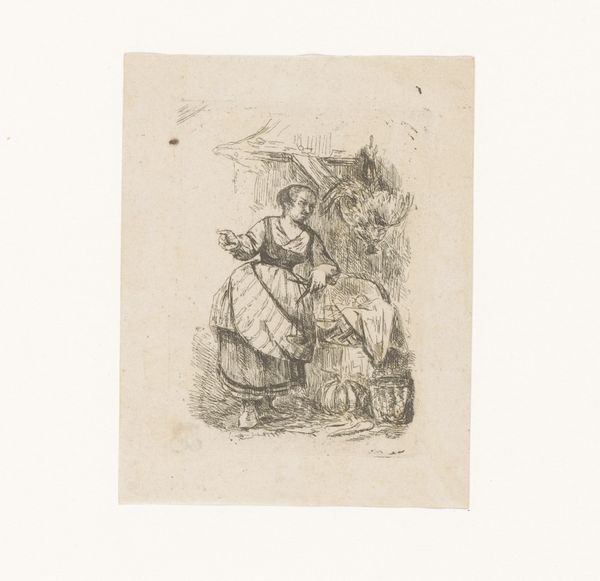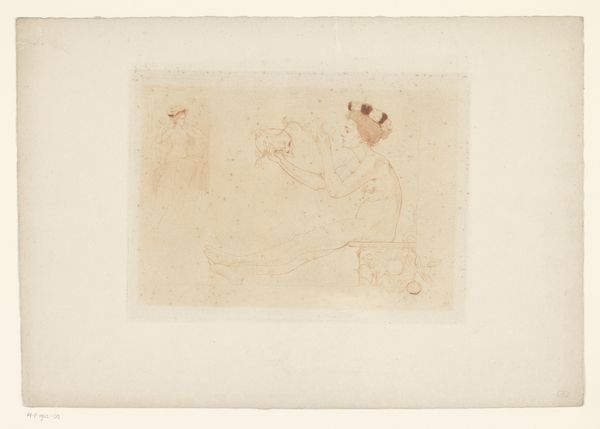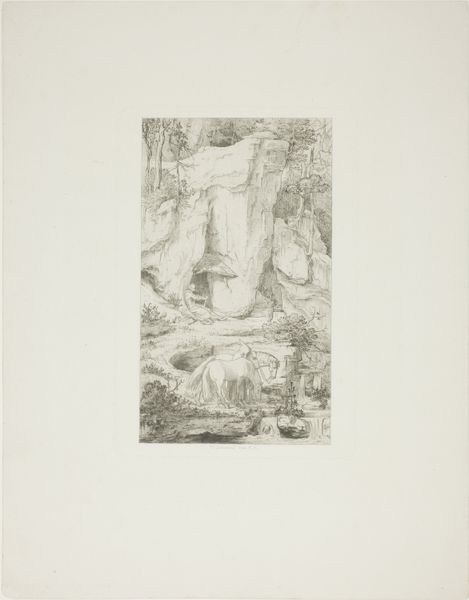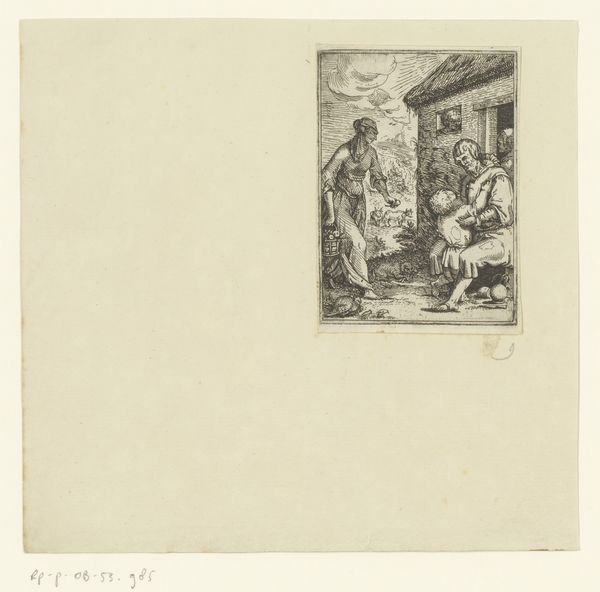
drawing, paper, ink
#
drawing
#
narrative-art
#
dutch-golden-age
#
figuration
#
paper
#
ink
#
genre-painting
Dimensions: height 215 mm, width 287 mm
Copyright: Rijks Museum: Open Domain
Editor: This is "Slapende vrouw, kind in wieg, vrouw met kind en man" a drawing by Leonaert Bramer, likely created sometime in the mid-17th century. It's done with ink on paper, and it’s currently held here at the Rijksmuseum. It feels intimate, domestic even, with all of its focus on family scenes. What do you see when you look at this work? Curator: The arrangement itself calls to mind the organization of family portraits, a way of displaying one's lineage. The recurring image of the sleeping woman also resonates with certain enduring themes; sleep as a state of vulnerability, trust, and even a symbol of innocence. Look at the way the artist captures the mother’s weariness. What kind of weight do you think the theme of "motherhood" might have had during this period? Editor: That's interesting. The mother does look so tired! Maybe motherhood was seen as the most essential role for women then, so portraying it truthfully, even the difficult parts, had significance? Curator: Precisely. And what about the child in the cradle? Does it trigger other associations in your mind, especially considering the era this piece was made? Editor: Well, cradles often make me think of nativity scenes. There is something inherently religious about that image. But also, cradles are fragile. They also make you consider ideas of safety versus danger. Curator: Yes! It reminds us that images and objects can trigger entire worlds of cultural memory. Do you see any other visual elements that contribute to this sense of charged imagery? Editor: The rough sketchiness, maybe? It doesn't hide its process. You see the artist trying to capture something ephemeral. It's almost like the scenes are fleeting memories. I like how my initial reading has expanded from the visual. Curator: It reveals the incredible depth present, even in a seemingly simple genre scene. The way these symbols connect us to history and psychology makes art viewing an unending source of insight.
Comments
No comments
Be the first to comment and join the conversation on the ultimate creative platform.
